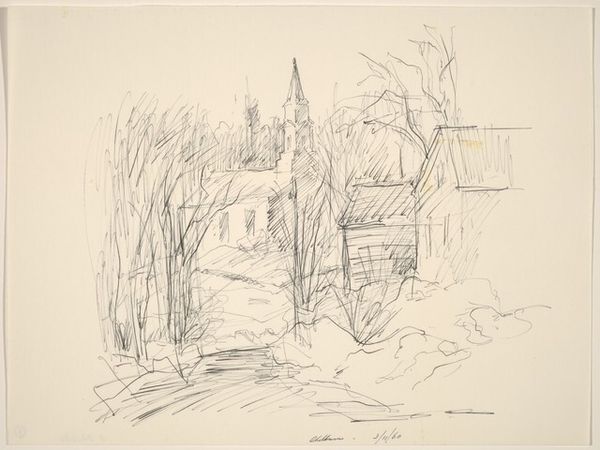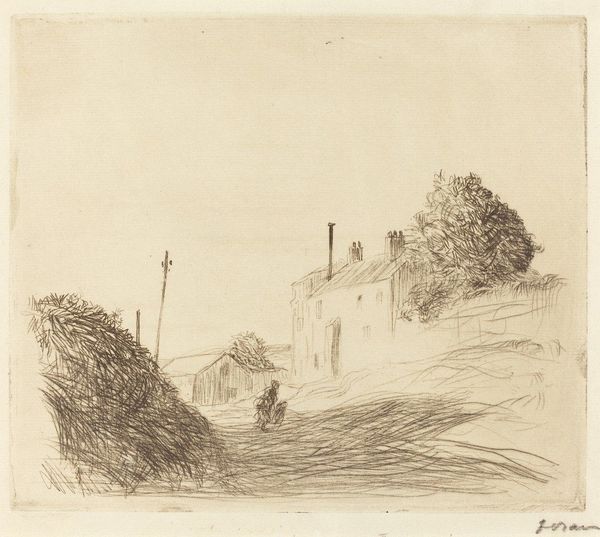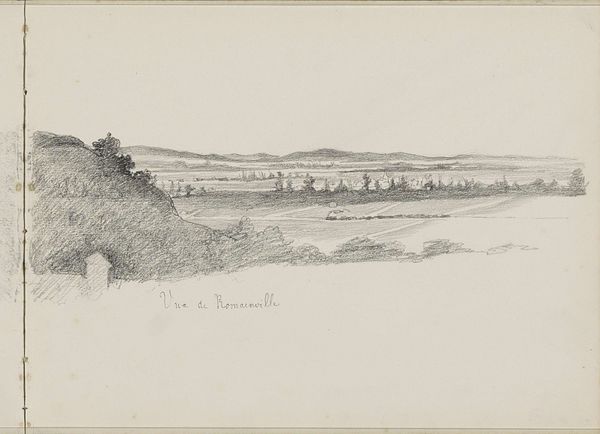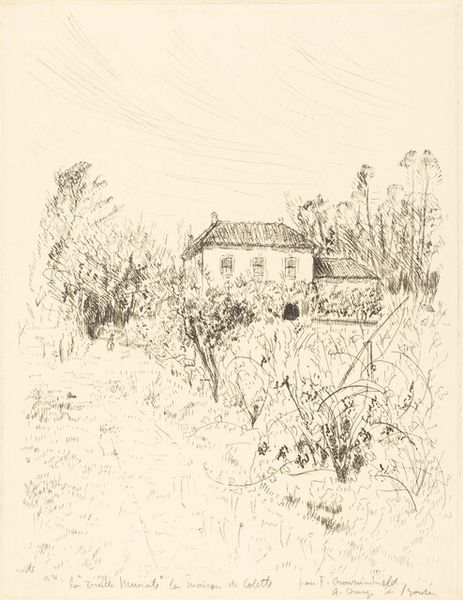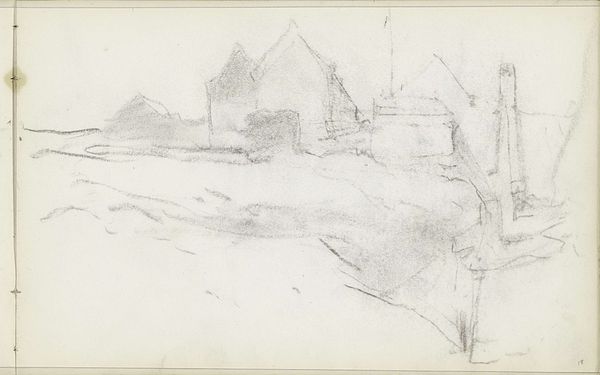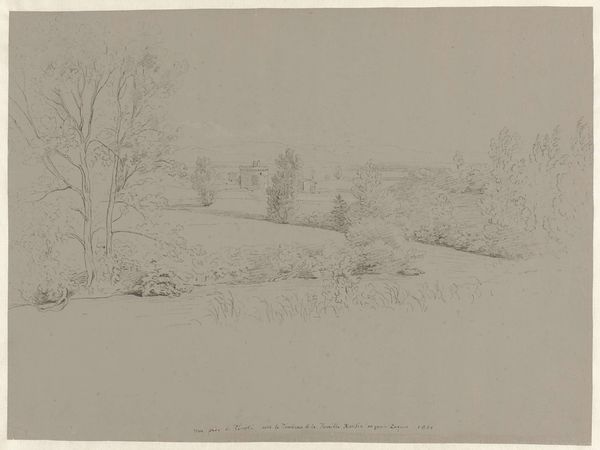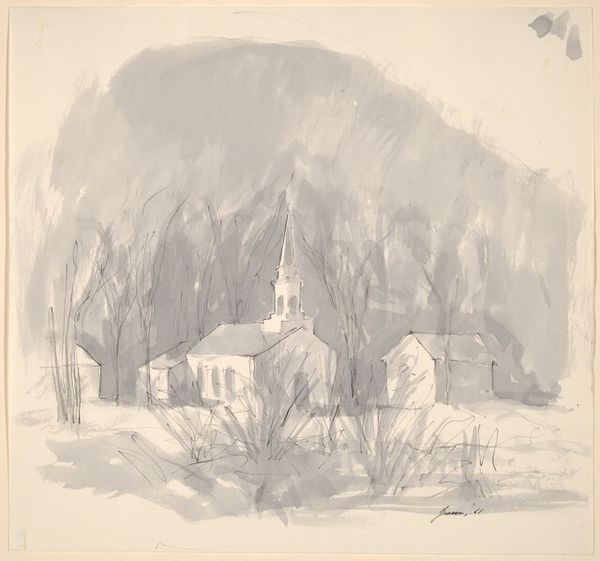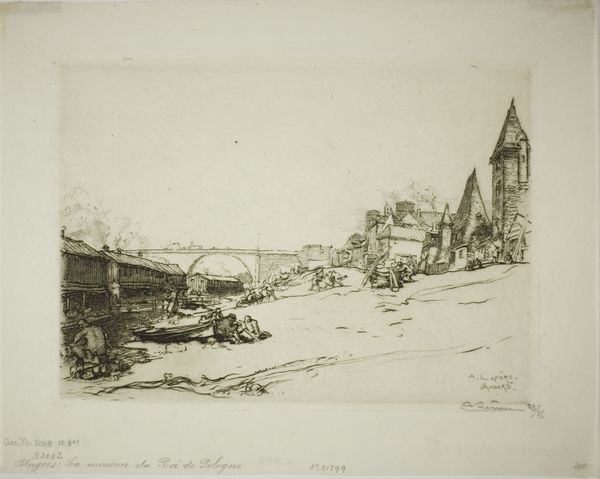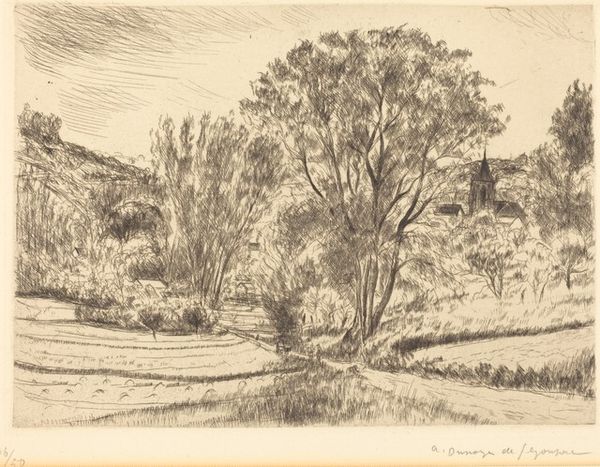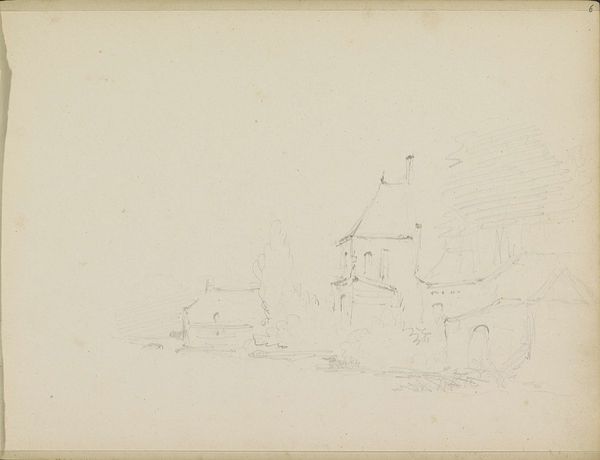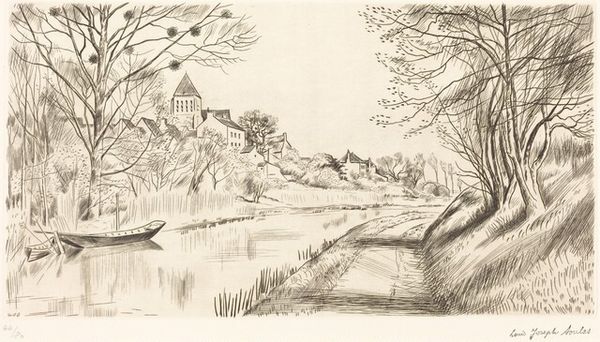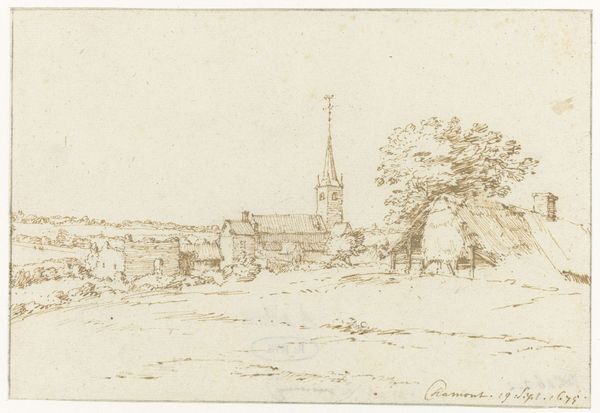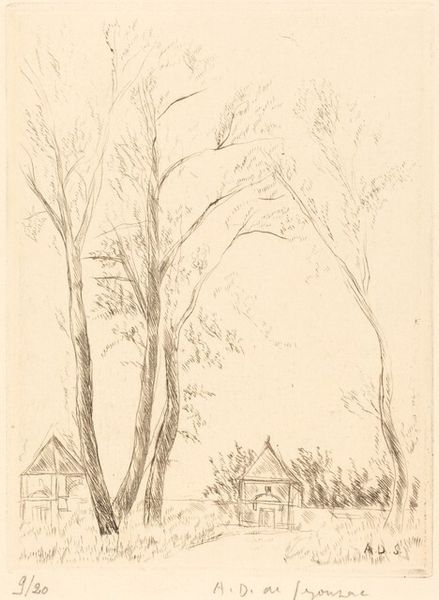
drawing, ink, pen
#
drawing
#
ink drawing
#
pen sketch
#
landscape
#
etching
#
ink
#
line
#
pen
#
realism
Dimensions: overall: 24.6 x 29.2 cm (9 11/16 x 11 1/2 in.)
Copyright: National Gallery of Art: CC0 1.0
Curator: Looking at "Snow Patches, Buckland, Massachusetts," a pen and ink drawing completed in 1961 by Donald Carlisle Greason, one immediately appreciates its quiet realism. It seems to depict a common New England scene of a small rural community. Editor: The atmosphere feels… delicate, almost melancholic. The limited palette focuses attention on form and texture, emphasizing a sparse beauty that reflects, perhaps, the austerity often associated with that region. It's interesting how absence creates such a strong sense of place. Curator: Indeed. The composition emphasizes line quality, using a careful, almost methodical hatching and cross-hatching technique to build form and shadow. These detailed lines evoke a palpable sense of stillness, like time holding its breath in the face of the winter season. One also thinks of regionalism as an effort to preserve threatened ways of life. Editor: And beyond technique, I wonder about the social narratives interwoven within these unassuming architectural depictions. Churches, farmhouses... They stand as cultural signifiers, markers of communities defined by shared histories and values. Who are the subjects or community surrounding it? What can we discern of social norms? Curator: Churches certainly have weight as community icons. Also consider that architecture here isn't just structural; it echoes the psychological landscape. The way the church steeple reaches, it evokes longing or aspiration beyond everyday existence. The ink drawing recalls a cultural heritage in the process of transformation. Editor: The presence of bare trees speaks to cycles of decline and rebirth. How does the drawing address the tension between preserving traditions, which can feel oppressive, and progress toward freedom and autonomy, where something old makes way for new foundations? Curator: These forms of cultural commentary also offer us new possibilities of reflection as they become available and as we have conversations like these. Editor: Precisely. In its subtle simplicity, the drawing embodies broader conversations about time, space, and identity. Curator: This has made me think of it with much deeper nuance, beyond just aesthetic appreciation, understanding some potential depth as an artwork and an artwork that represents society in that time. Editor: Yes, a seemingly straightforward rendering actually unfolds into a thoughtful exploration of community memory and identity through line and form. It really calls us to consider what history and culture this art is reflecting.
Comments
No comments
Be the first to comment and join the conversation on the ultimate creative platform.
